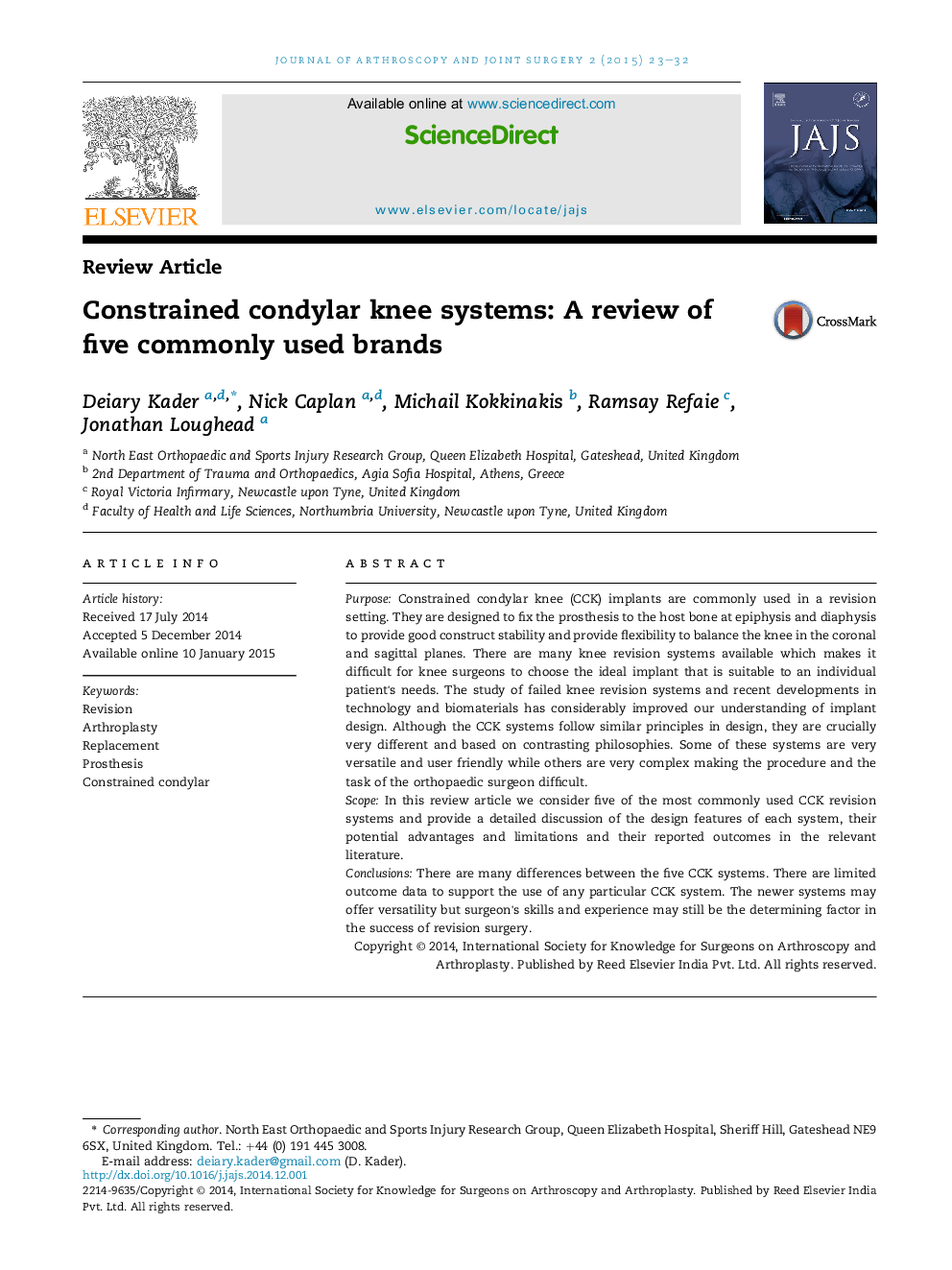| Article ID | Journal | Published Year | Pages | File Type |
|---|---|---|---|---|
| 3245124 | Journal of Arthroscopy and Joint Surgery | 2015 | 10 Pages |
PurposeConstrained condylar knee (CCK) implants are commonly used in a revision setting. They are designed to fix the prosthesis to the host bone at epiphysis and diaphysis to provide good construct stability and provide flexibility to balance the knee in the coronal and sagittal planes. There are many knee revision systems available which makes it difficult for knee surgeons to choose the ideal implant that is suitable to an individual patient's needs. The study of failed knee revision systems and recent developments in technology and biomaterials has considerably improved our understanding of implant design. Although the CCK systems follow similar principles in design, they are crucially very different and based on contrasting philosophies. Some of these systems are very versatile and user friendly while others are very complex making the procedure and the task of the orthopaedic surgeon difficult.ScopeIn this review article we consider five of the most commonly used CCK revision systems and provide a detailed discussion of the design features of each system, their potential advantages and limitations and their reported outcomes in the relevant literature.ConclusionsThere are many differences between the five CCK systems. There are limited outcome data to support the use of any particular CCK system. The newer systems may offer versatility but surgeon's skills and experience may still be the determining factor in the success of revision surgery.
